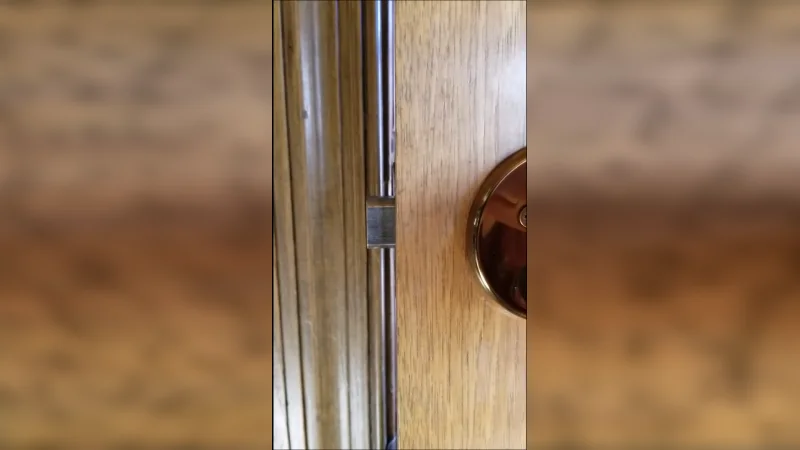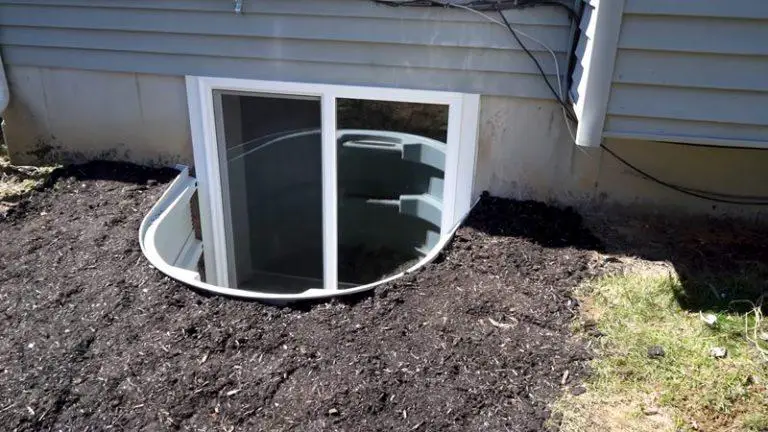Deadbolt Doesn’t Retract All the Way – Causes and Fixes

If you are experiencing difficulty opening your door because your deadbolt is not fully retracting, you are not alone. This is a common problem that can be caused by a number of different factors, such as misalignment of the lock or strike plate, wear and tear on the lock, or lubrication issues.
In this article, we will explore the causes of a deadbolt that doesn’t retract all the way and provide some potential solutions for fixing the problem. Whether you are a homeowner or a property manager, it is important to maintain the functionality of your locks for the sake of security and convenience.
Let’s take a closer look at how to troubleshoot and fix a deadbolt that is not fully retracting.
You'll Learn About
Causes of the Problem
There are several potential causes for a deadbolt that doesn’t retract all the way. One of the most common causes is misalignment of the lock or strike plate. If the lock is not properly aligned with the strike plate in the door frame, the deadbolt may bind or get stuck when you try to open the door.
This can be caused by a variety of factors, such as warping of the door or frame, or simply by the lock and strike plate being installed incorrectly.
Another potential cause of a deadbolt that doesn’t retract all the way is wear and tear on the lock. Over time, the internal mechanisms of a lock can become worn or damaged, causing the deadbolt to stick or bind when you try to open the door. This is especially likely to happen if the lock is subjected to harsh weather conditions or if it is frequently used.
Lubrication issues can also cause a deadbolt to stick or not fully retract. If the lock is not properly lubricated, the internal mechanisms may become stuck or misaligned, leading to difficulty in opening the door. This can be caused by a variety of factors, such as using the wrong type of lubricant or not lubricating the lock frequently enough.
It is important to identify the cause of the problem in order to properly fix a deadbolt that doesn’t retract all the way. Depending on the cause, you may need to adjust the alignment of the lock, replace the lock, or simply lubricate it in order to restore proper function.
Things You Need Before Proceeding
Here are a few things to keep in mind or have on hand when trying to fix a deadbolt that doesn’t retract all the way:
Know Your Lock
Familiarize yourself with the type of lock you have and its basic functions. This will help you understand how the lock works and what could be causing the problem.
Have a Good Quality Lubricant
Make sure to have a good quality lubricant on hand, such as a penetrating lubricant or a silicone-based lubricant. This will help you lubricate the lock and potentially fix the problem.
- Have a flashlight and tweezers: A flashlight and tweezers can be helpful tools for checking the lock for debris or foreign objects that may be causing the problem.
- Have a hammer and punch: A hammer and punch can be useful for gently tapping the lock in an attempt to loosen any stuck or misaligned parts.
- Have a hairdryer or heat gun: If the lock is freezing due to cold weather, a hairdryer or heat gun can be helpful for warming it up and potentially fixing the problem.
Know How to Replace the Lock
If the lock is beyond repair or you are unable to fix the problem, you may need to replace it. Make sure you have the necessary tools and know-how to do this, or have a professional locksmith on hand to assist you.
Understand the Security Implications
It is important to understand the security implications of having a deadbolt that doesn’t fully retract. Make sure to take steps to fix the problem as soon as possible to ensure the security of your home or property.
How to Fix the Problem
If you are experiencing difficulty opening your door because your deadbolt is not fully retracting, there are a few steps you can take to try to fix the problem. Here are three options to consider:
Option 1: Lubricate the Lock
Lubrication is often the simplest and quickest fix for a deadbolt that doesn’t retract all the way. You can use a penetrating lubricant, such as WD-40, or a silicone-based lubricant to coat the internal mechanisms of the lock
Be Sure to Fully Coat the Bolt and Any Other Moving Parts to Ensure Smooth Operation
If the lock is severely worn or damaged, lubrication may not be enough to fix the problem, but it is worth a try as a first step
Option 2: Check and Adjust the Alignment of the Lock and Strike Plate
If the lock is misaligned with the strike plate in the door frame, it can cause the deadbolt to bind or get stuck when you try to open the door
You Can Try Adjusting the Lock or the Strike Plate to See if That Helps
If the lock is severely misaligned or damaged, you may need to replace it
Option 3: Replace the Lock if It is Worn Out or Beyond Repair
If the lock is old or has been subjected to harsh weather conditions, it may be worn out and in need of replacement. If you have tried lubricating the lock and adjusting the alignment but it is still not working properly, it may be time to replace it
You Can Either Install a New Lock Yourself or Hire a Professional Locksmith to Do It for You.
It is important to properly troubleshoot the cause of the problem in order to determine the best course of action for fixing a deadbolt that doesn’t retract all the way. If you are unable to fix the problem on your own or if you are unsure of what to do, it may be necessary to call a professional locksmith for assistance.
Tips to Prevent
Here are a few additional tips for fixing a deadbolt that doesn’t retract all the way:
Check the Lock for Debris or Foreign Objects
Sometimes, small pieces of debris or foreign objects can get stuck in the lock and cause the deadbolt to stick or not fully retract. You can try using a flashlight and a pair of tweezers to carefully check the lock for any debris or foreign objects that may be causing the problem.
Try Using a Hammer and Punch to Gently Tap the Lock
If the lock is sticking or binding, you may be able to loosen it up by gently tapping it with a hammer and punch. This can sometimes help to loosen up any stuck or misaligned parts.
Try Using a Little Heat
If the lock is freezing due to cold weather, you may be able to fix the problem by applying a little heat. You can try using a hairdryer or a heat gun to warm up the lock and see if that helps. Just be careful not to apply too much heat, as it can damage the lock.
Check the Door Hinges
If the door is binding or sticking when you try to open it, it could be caused by problems with the hinges. You can try loosening or tightening the hinges to see if that helps. If the hinges are severely damaged or worn, you may need to replace them.
Consider Replacing the Lock With a Higher Quality One
If you are constantly having problems with your lock, it may be worth investing in a higher quality lock that is less prone to issues. Make sure to choose a lock that is appropriate for the type of door you have and the level of security you need.
Editor’s Note
It sounds like the deadbolt in your lock is not fully retracting, which is preventing you from being able to open the door. Here are some things you can try to fix the issue:
Lubricate the Lock
You mentioned that you have already tried lubricating the lock with graphite, but it may be worth trying a different lubricant, such as a penetrating lubricant like WD-40 or a silicone-based lubricant. Be sure to fully coat the internal mechanisms of the lock, including the bolt and any other moving parts.
Check the Alignment of the Lock
If the lock is misaligned, it may be causing the deadbolt to bind or not fully retract. You can try adjusting the lock or the strike plate in the door frame to see if that helps.
Check the Condition of the Lock
If the lock is old or has been subjected to harsh weather conditions, it may be worn out and in need of replacement. If you have tried lubricating the lock and adjusting the alignment but it is still not working properly, it may be time to replace it.
Remove the Door
If the lock is beyond repair and you are unable to open the door, you may need to remove the door from the hinges in order to replace the lock. To do this, you will need to remove the hinge pins and have a friend help you lift the door off of the hinges. Once the door is off, you can replace the lock and rehang the door.
Conclusion
In conclusion, a deadbolt that doesn’t retract all the way can be a frustrating and potentially even dangerous problem. There are a number of potential causes for this issue, such as misalignment of the lock or strike plate, wear and tear on the lock, or lubrication issues.
Depending on the cause of the problem, you can try a few different options to fix it, such as lubricating the lock, adjusting the alignment of the lock and strike plate, or replacing the lock if it is worn out or beyond repair.
If you are unable to fix the problem on your own or if you are unsure of what to do, it is always a good idea to call a professional locksmith for assistance. Maintaining the functionality of your locks is important for the sake of security and convenience, so don’t hesitate to take action if you are having trouble with your deadbolt.

